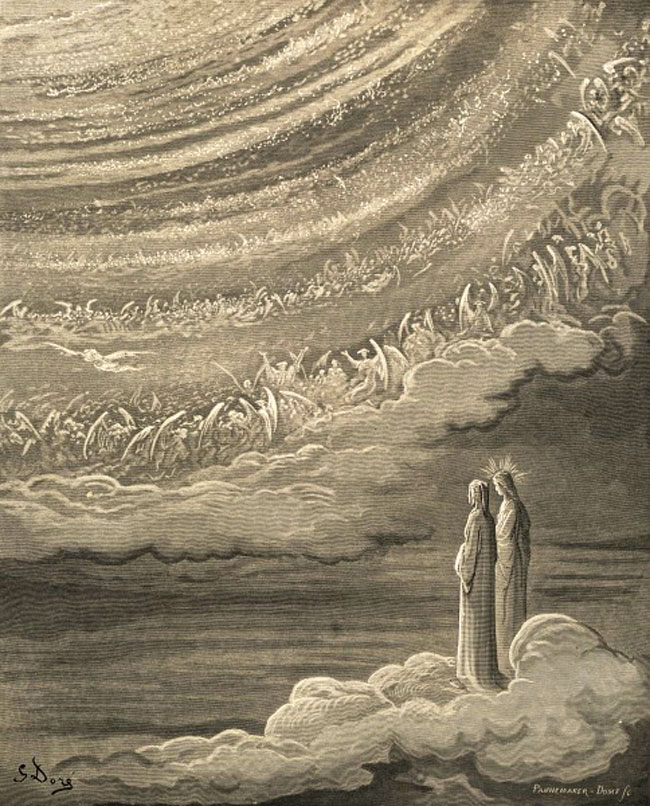After the vision presented by Beatrice with the Eagle, Fox and Dragon – she presents a new image in cryptic form, which is most likely describing the role of Grace in healing distortions and redemption.
Beatrice first says that the Eagle will always try to return with some feathers, which changes the chariot into a monster and makes it a pray. This suggest the return of ideas of Divinity as an arbitrary non-covenantal power, which operates at a whim, as exemplified with Zeus. There is a consistent potential for misapprehending the Heavens and God’s nature.
But then she says that she sees that a “515” (cinquecento diece e cinque), put/placed by God, that will destroy (anciderà) the harlot (fuia) and the giant that commits offenses with her.
From the spiritual view this is likely how God’s Grace operates throughout creation to heal and rectify distortions – both as a universal template, and also showing how this happened in Dante’s own life; the force that led to his return out of the dark forest, and away from the separation from the Heavens.
The thief and giant would in this anagogical sense be the perverted soul, and the bigger structures that control and feed off the perverted souls. The radiance of God’s Grace illuminates and removes these dynamics – in the numerical symbolism of 5 = Grace and 1 = God, so Divine Light surrounded by Grace (515). It will come “secure from every obstacle and barrier”, in Beatrice’s words.
In a bigger sense this also completes Dante’s inner process of not only recognizing his earlier faults and main flaw of falling away from the relationship, but also understanding why it happened, and also how it was restored partly through God’s Grace. Thus we have a self-referring dynamic: we are in the Garden of Eden, the soul and relationship are restored, and we also understand the longer process that led us here.
And with that, the main movements in Eden (except the drinking from Eunoe) are complete . The biblical Eden shows the Fall and the exile of the human soul, and Dante has now given a poetic rendering of the coming back and restoration of this relationship.
Which then also completes the foundation for embarking on the third canticle, with the ascent into Paradiso and final communion with the Empyrean, and the Heavens.

